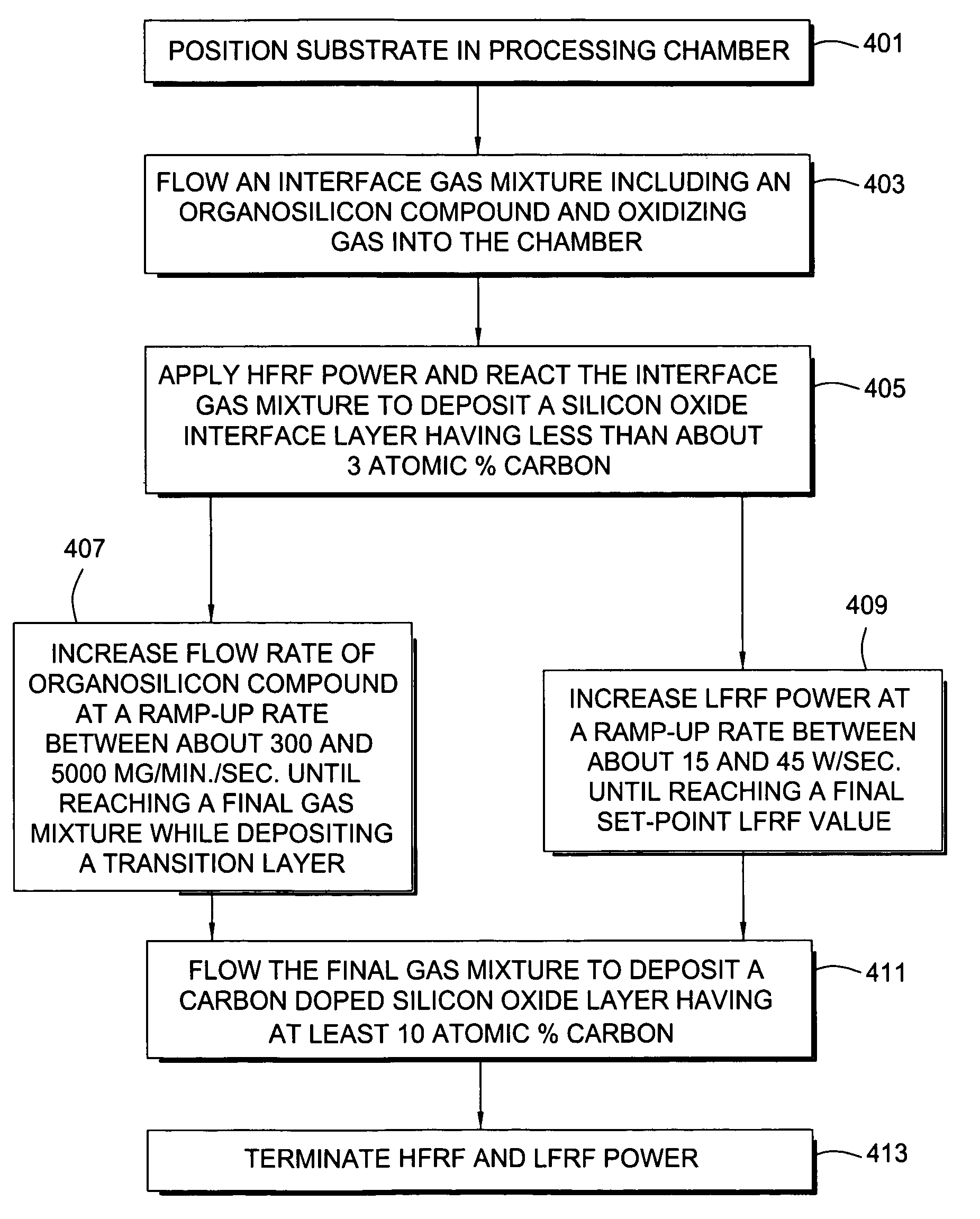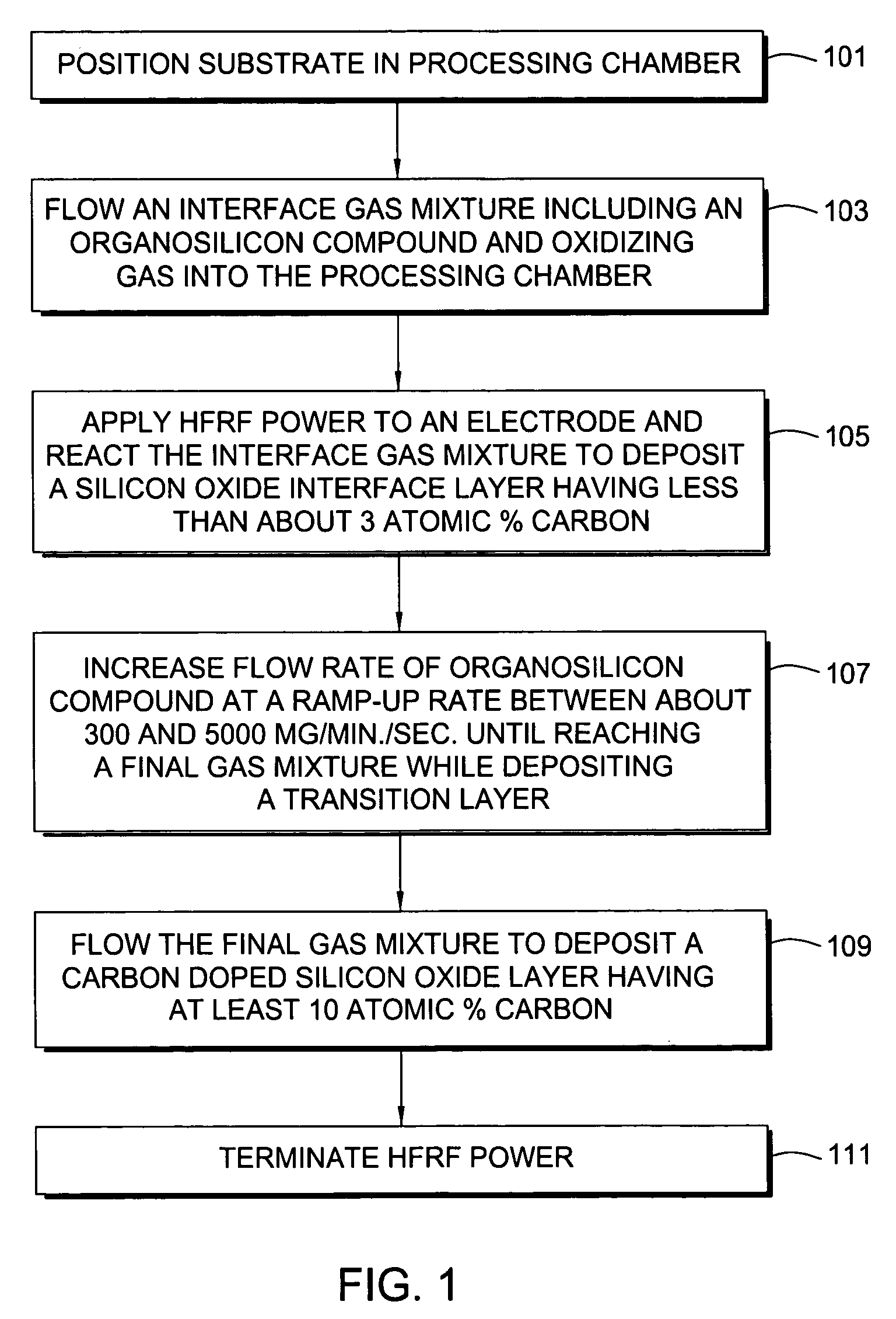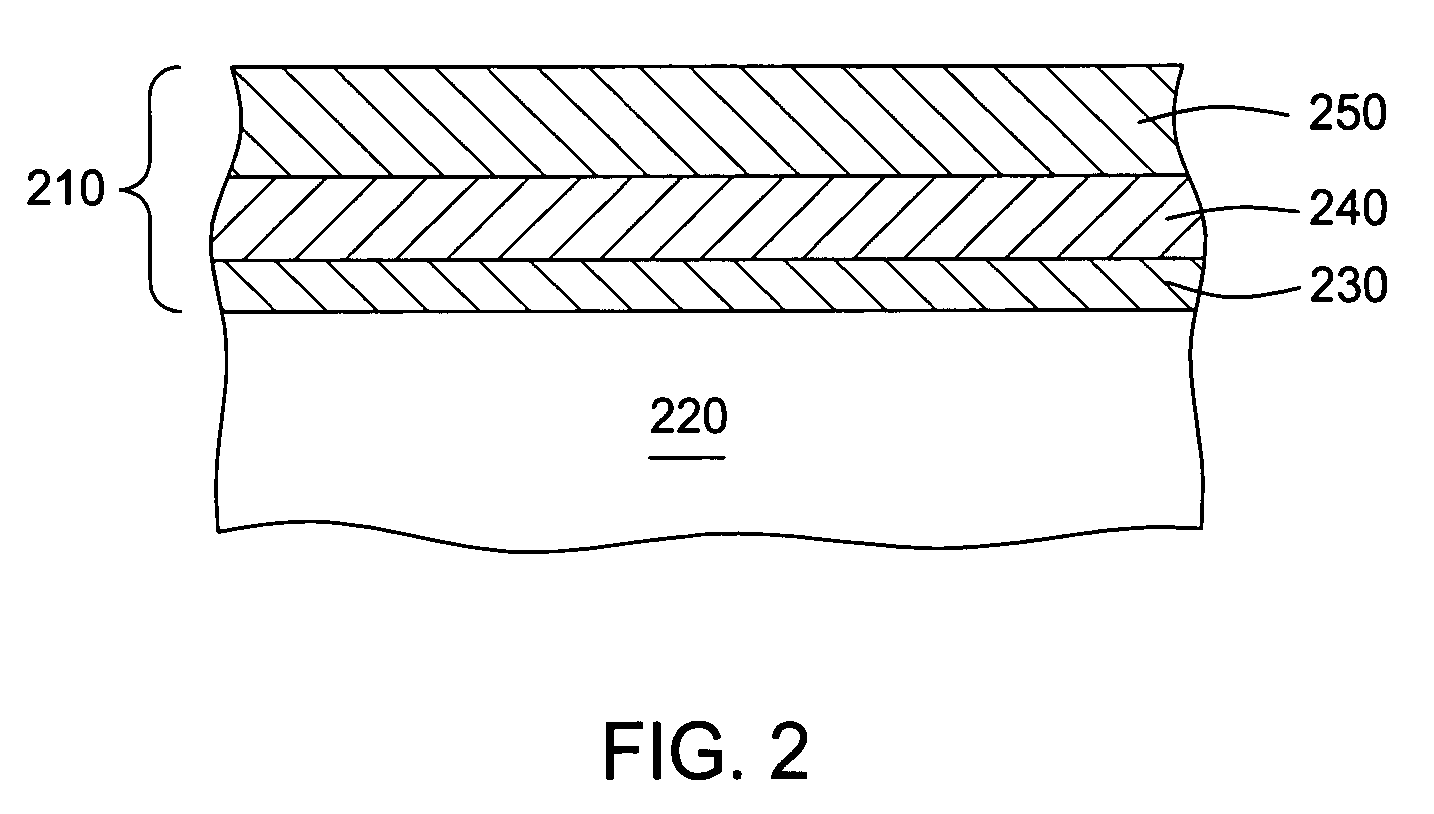Interface engineering to improve adhesion between low k stacks
a technology of interface engineering and low k stacks, applied in the field of organosilicon compound depositing on the substrate, can solve the problems of many types and stages of devices experiencing plasma-induced damage (pid), substrates with barrier layers or dielectric layers deposited thereon are more susceptible to pid, and achieve the effect of increasing the flow rate of one or more organosilicon compounds
- Summary
- Abstract
- Description
- Claims
- Application Information
AI Technical Summary
Benefits of technology
Problems solved by technology
Method used
Image
Examples
example
[0048]Organosilicate dielectric layers were deposited on a substrate in accordance with the embodiment described above with respect to FIG. 5. The films were deposited using a PECVD chamber (i.e., CVD chamber) on a PRODUCER system, available from Applied Materials, Inc. of Santa Clara, Calif. During deposition the chamber pressure was maintained at a pressure of about 4.5 Torr and the substrate was maintained at a temperature of about 350° C.
[0049]The substrate was positioned on a substrate support disposed within a process chamber. The process gas mixture having an initial gas composition of 1000 sccm helium and 700 sccm oxygen for the interface layer was introduced into the chamber and flow rates stabilized before initiation of the HFRF power. Subsequently, HFRF power of about 500 W was applied to the showerhead to form a plasma of the interface process gas mixture composition including a OMCTS flow rate of about 700 mg / min., and deposit a silicon oxide layer having a carbon conte...
PUM
| Property | Measurement | Unit |
|---|---|---|
| dielectric constant | aaaaa | aaaaa |
| frequency | aaaaa | aaaaa |
| frequency | aaaaa | aaaaa |
Abstract
Description
Claims
Application Information
 Login to View More
Login to View More - R&D
- Intellectual Property
- Life Sciences
- Materials
- Tech Scout
- Unparalleled Data Quality
- Higher Quality Content
- 60% Fewer Hallucinations
Browse by: Latest US Patents, China's latest patents, Technical Efficacy Thesaurus, Application Domain, Technology Topic, Popular Technical Reports.
© 2025 PatSnap. All rights reserved.Legal|Privacy policy|Modern Slavery Act Transparency Statement|Sitemap|About US| Contact US: help@patsnap.com



